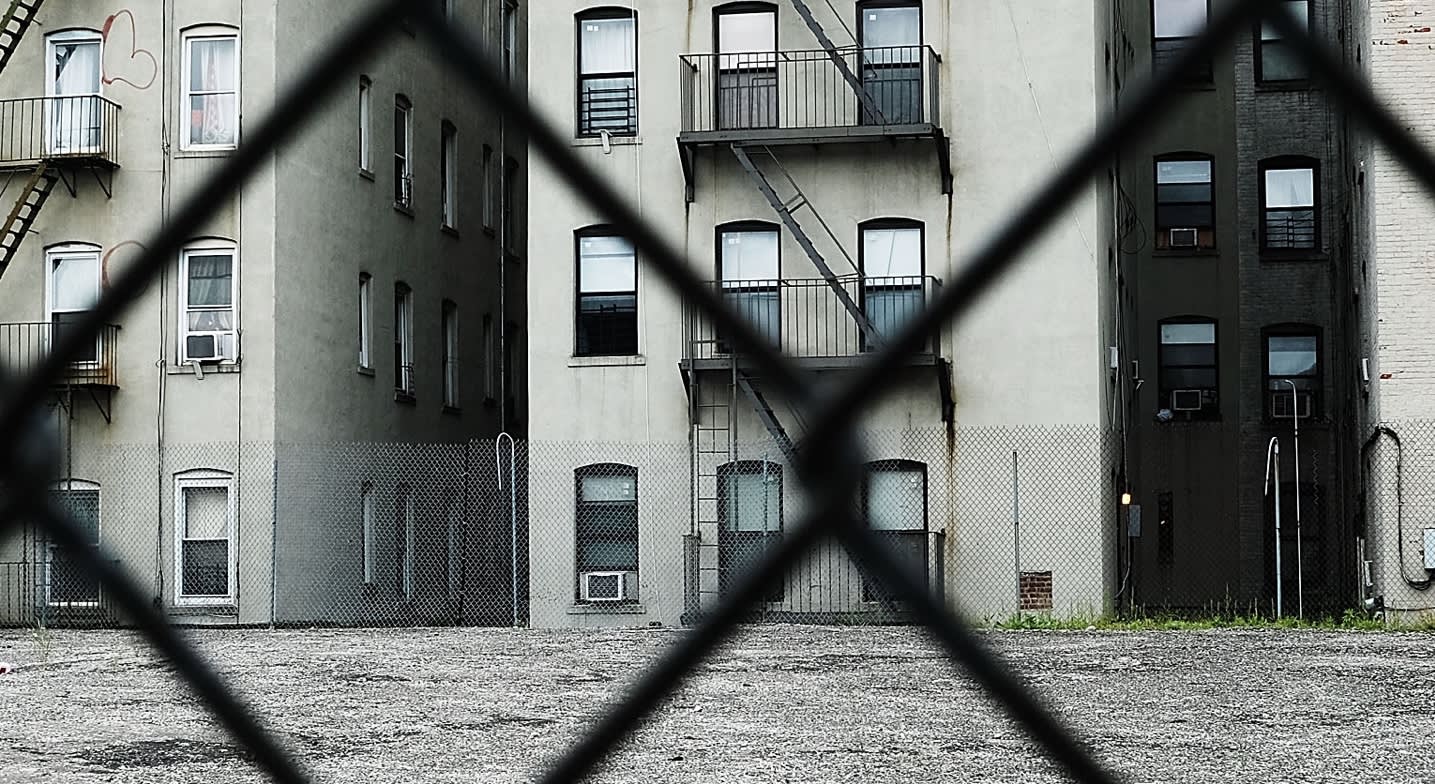For years now, black citizens of Baltimore have elected black mayors and black city councils and have sent black representatives to the capital in Annapolis. But this high level of representation in Baltimore’s government hasn’t protected its black citizens from systematic discrimination and harassment by the Baltimore Police Department, according to a 2016 federal probe.
For journalist Christopher Johnson, the 2015 death of Freddie Gray in the back of a Baltimore Police van ignited his questions about why police treatment of black citizens seems to be getting worse across the nation, even as diversity blooms. Johnson opens his new Audible series, 100:1 The Crack Legacy, by linking the appalling death of Gray — which sparked the Department of Justice investigation — and recent similar deaths back to the birth of hyper-aggressive drug enforcement in the 1980s.
In the episodes that follow, Johnson interviews police, judges, attorneys, and community members who recount the wave of fear during the crack epidemic 30 years ago, followed by waves of arrests under “war on drugs” laws that, he says, “changed how and why police went after people.”
Johnson, a former NPR producer, was raised in Washington, D.C., as crack became the focus of the drug war. “I’ve been wanting to go back and dig deeper to find some root causes,” says Johnson. “There are many, many explanations for hyper-aggressive policing, especially when it comes to the mistreatment of black Americans. But as we explain [in the series],” he says, “the decline of probable cause and intensification of profiling, as part of the prosecution of the drug war, definitely fed our current moment.”
A suspect caught with five grams of crack cocaine would receive the same jail time as a comparable suspect caught with 500 grams of powder cocaine.
One of Johnson’s interview subjects, 34-year police veteran and former Maryland State Police commander Neill Franklin, puts it bluntly: “Whether we’re talking Freddie Gray, whether we’re talking Eric Garner, whether we’re talking Tyrone West… it’s all about the stigma we have on black people, especially young black people, which came about because of the war on drugs.”
The “100 to 1” is a reference to the now-notorious sentencing guidelines established by the 1986 Anti-Drug Abuse Act. Those guidelines dictated that a suspect caught with five grams of crack cocaine would receive the same jail time as a comparable suspect caught with 500 grams of powder cocaine.
After those guidelines were enacted, “everything was crack in the courts — every single defendant was African-American,” attorney Nkechi Taifa says, in one episode of 100:1. Taifa was working as court-appointed lawyer in Washington, D.C., as the wave of arrests flooded the court system and prisons.
Also interviewed on the show is Eric Sterling, a lawyer then serving on the staff of the House Judiciary Committee, who played a central role in drafting the original legislation. Sterling is now an outspoken critic of the rules he helped create, and he recounts how the sentencing guidelines were reached. “These [were] magical numbers,” he now admits. “We [were] just jumping in and picking numbers out of our ass.”
With the ‘86 midterm elections fast approaching, there was a contest to prove who could appear tougher on crime. What should have been a careful debate looked, in retrospect, more like a bidding war: President Reagan proposed 20-to-1 guidelines, and the House countered with 50 to 1 before the Senate prevailed, settling finally on 100 to 1.
To determine which punishments fit which crimes, Sterling and his partners relied upon the advice of a single D.C. narcotics officer. We learn in 100:1 that the officer, Johnny St. Valentine Brown, later wound up in prison himself for forging documents and lying under oath.
Has lopsided enforcement actually made streets safer? The answer would appear to be no.
Sterling almost makes the rules sound like an accident. How much of the legislation could be attributed to innocent recklessness? “Lawmakers were responding in large part to the anxieties of their constituents, anxious about decay, deviance, and addiction in U.S. cities,” explains Johnson. “It’s a story of race, morality, urban control, divestment, and policing. It’s a continuation on a theme that fed the first war on drugs in the 1970s: the racialization and severe criminalization of drug use.”
The price of punishment
Whether racism or fear, or a mixture of both, kept the culture of aggressive policing in place, the results have been — and continue to be — devastating for African-Americans.
The U.S. prison population expanded by around 500 percent between 1980 and 2009, and we have the highest incarceration rate on Earth. According to the American Civil Liberties Union, by 2004, under the 100-to-1 rule, “blacks served virtually as much time in prison for a nonviolent drug offense (58.7 months) as whites did for a violent offense (61.7 months). In 2010, 85 percent of the 30,000 people sentenced for crack cocaine offenses under the 100-to-1 regime were African-American.”
Has lopsided enforcement actually made streets safer? The answer would appear to be no. Overall, violent crime in America has dropped steadily over the past quarter century. The decline has been attributed to a number of factors, but the best studies indicate that incarceration rates are not among them. As crime leveled off after the turn of the millennium, for instance, incarceration rates continued to soar, and data collected from individual states have even suggested a negative correlation.
This point is central to Johnson’s series, because while it’s tricky to demonstrate the benefits of mass incarceration, it is easy to identify the costs, especially to African-Americans. By 2010, blacks were being incarcerated at six times the rate of whites, leading to absent students, absent husbands, and absent fathers. A criminal record will restrict access to steady employment, and the inability to cover criminal fines can potentially lead to crushing debt, suspended licenses, arrest warrants, and more jail time.
The current strife captured in Johnson’s series shows clearly that “tough on crime” policies are backfiring on an even larger scale. Their chilling side effects can no longer be denied in the age of smartphones and social media. “While we make up only 13 percent of the population, we’re the victims of nearly a quarter of all police killings in 2016. And we make up 40 percent of all U.S. prisoners,” Johnson says in 100:1. “Look at this the way a lot of black Americans do: Many are absolutely sure that at least one of these paths, or something close to it, will be our fate no matter what we do to avoid it.”
Enter opioids
Today, crack has been replaced by opioids in the headlines. Unlike crack, however, opioid addiction has been viewed as disproportionately affecting white America, and opioid addicts are frequently portrayed in the press as victims of overindulgent health care providers. What was, with crack, seen as a character flaw to be punished (and harshly), is now, in opioid users, being treated as a mental illness, a circumstance for which we must have sympathy. For those affected by the crack epidemic, the irony is hard to ignore.
By transforming our approach to addiction and favoring rehabilitation over incarceration, the opioid epidemic could provide an opportunity to address the roots of drug-related crime, but Johnson is skeptical. He points out that heroin addiction in America’s inner cities is nothing new. “I’m not sure if people’s minds are really being changed,” he says.
In 2010, Congress passed the Fair Sentencing Act, which finally reduced the sentencing disparities between crack and powder cocaine, from 100 to 1 to 18 to 1. However, just this month, Attorney General Jeff Sessions issued sweeping new guidance directing all federal prosecutors to pursue the strictest possible sentences. The order rescinds previous guidance under the Obama administration intended to reduce sentences for nonviolent drug offenders.
While an evolving response to addiction may be a good chance to curtail the drug trade at its source and eliminate the excuses for combative policing that 100:1 has brought to light, that kind of reform may just have to wait.
Listen for free to episode 1 of 100:1 The Crack Legacy, “Autopsy No. 86-999.”




